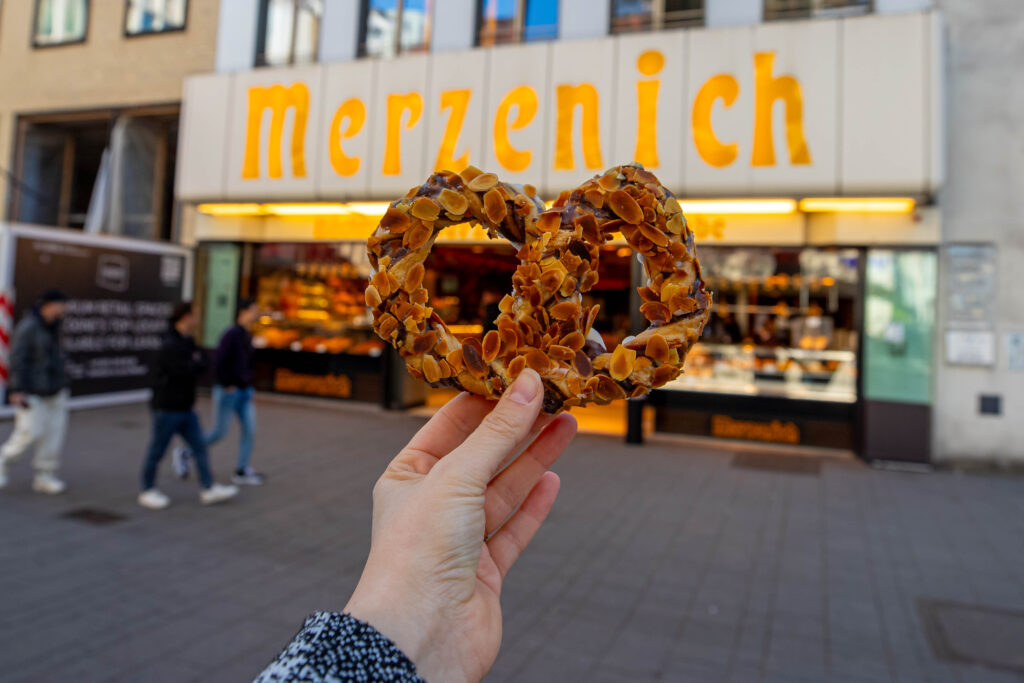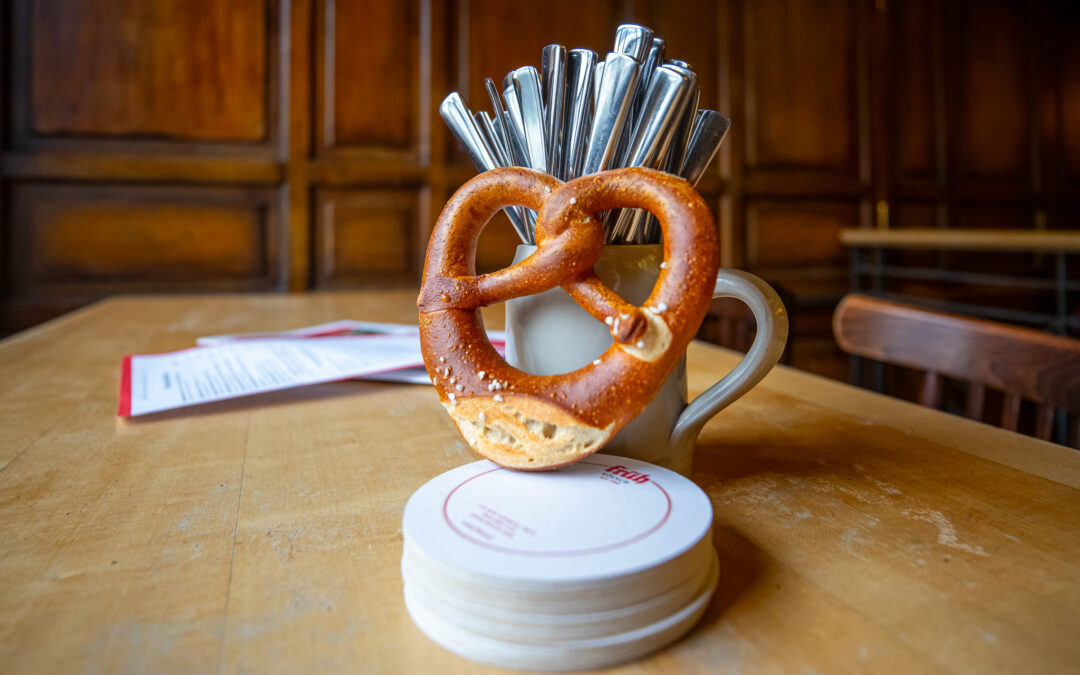When most people think of traveling in Germany, delicious food isn’t usually the first thing that comes to mind. And you know what… fair point. But there are a number of *actually delicious* foods to enjoy while traveling in Cologne. Cologne is located in the Rhineland region, an area of western Germany that is steeped in rich culinary tradition shaped by centuries of trade, Catholic feasting culture, and hearty rural roots.
Known for its comforting, stick-to-your-ribs cuisine, Rhineland cuisine is characterized by rich flavors and hearty dishes—often paired with tangy cabbage or creamy mustard sauces. Here’s your guide to the ten signature dishes to taste when you’re wandering the Old Town of Cologne.
You can learn about all of these delicious traditions on a culinary walking tour of Cologne! From Reibekuchen and Bratwurst to Kölsch beer and Riesling wine, our guides will open your eyes to some of the surprisingly delicious food and drinks from around the region. We can guarantee you will discover local specialities that you wouldn’t otherwise know about!
10 Rhineland Foods You HAVE to Try in Cologne
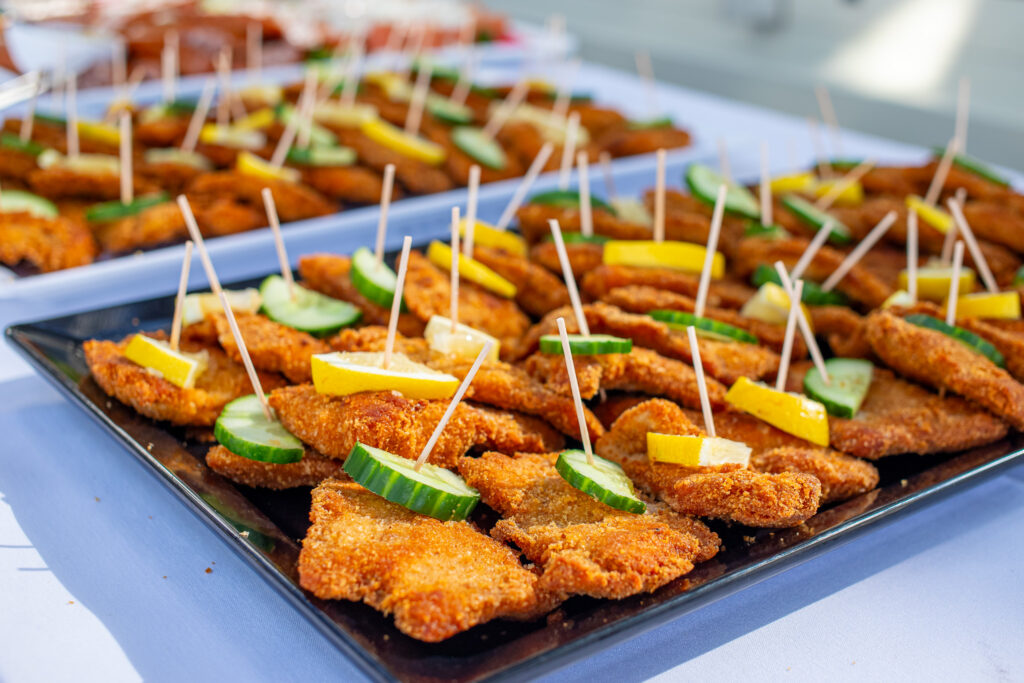
Halve Hahn
This is a traditional Cologne bar snack that translates to “half a rooster” in the local dialect of German. Despite the name, Halve Hahn is not a chicken dish—it’s a thick slice of Gouda cheese on a crusty rye roll, often topped with onions and mustard.
The origin of the name is not agreed upon, but one popular theory suggests it comes from a birthday party prank in 1877. The host, instead of ordering actual half roosters for his guests, had the waiter serve them cheese sandwiches on rye rolls, with the name “Halve Hahn” sticking from that day on. Maybe it was funnier in the 19th century?
Why you’ll love it: The simplicity is deceptive: sourdough rye meets mellow cheese, spicy mustard, and sharp raw onions. It goes wonderfully with a Kolsch beer.
Where to try it: You can find this at almost any brauhaus in Cologne, and they are very similar since all the ingredients are pretty much raw. Order one with a cold Kölsch or two.
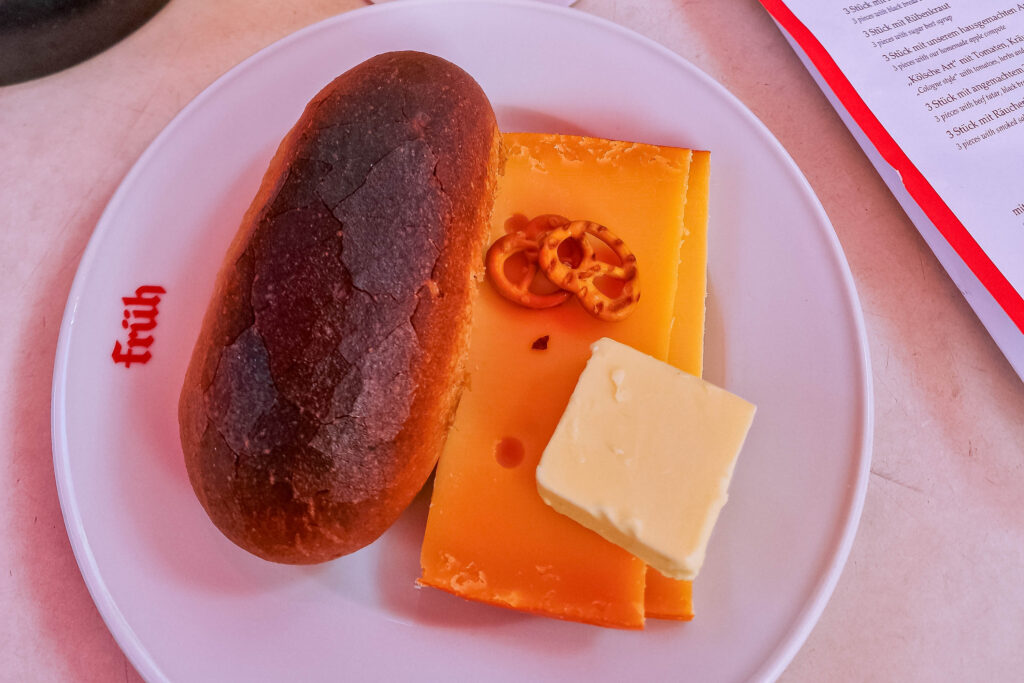
Reibekuchen
These are crispy potato pancakes made with shredded potatoes, onions, flour, and egg. They’re usually served piping hot with applesauce or sour cream. Sometimes you can get them topped with smoked salmon. You’ll smell them before you see them! That rich, golden aroma of freshly fried potatoes? Pure magic.
Why you’ll love them: Crispy on the outside, soft on the inside, and absolutely irresistible—Reibekuchen is the Rhineland’s ultimate comfort food.
Where to try it: often sold from carts, street stalls, or grabbed at festive markets (like the famous Christmas markets) or during Karneval. There is a permanent street food stall called Rievkoochebud Reibekuchen selling amazing Reibekuchen on Salzgasse.
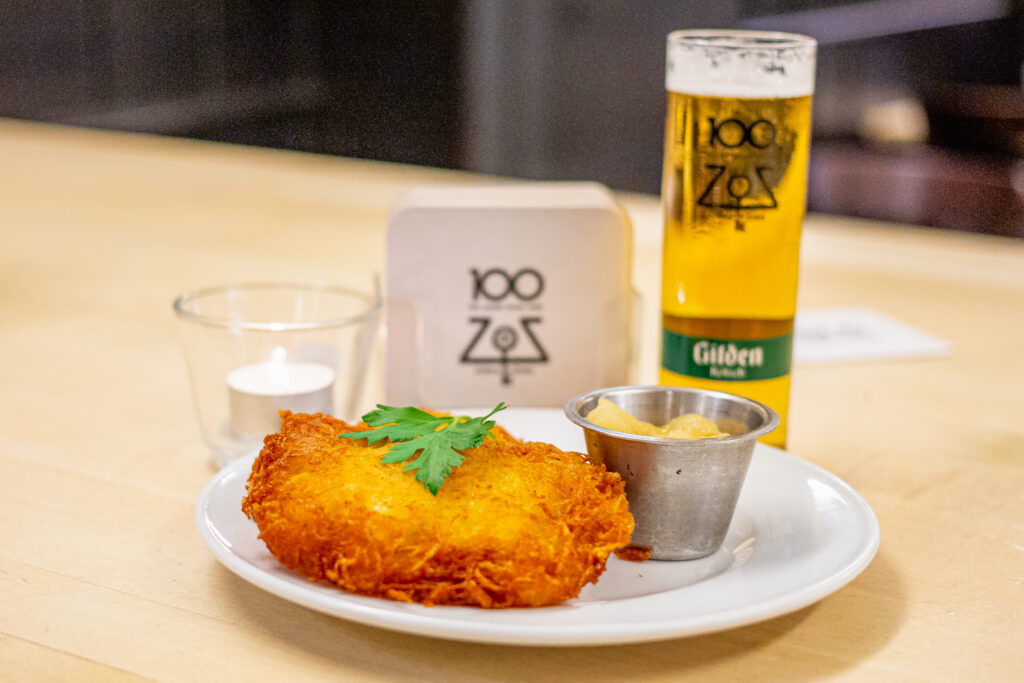
Himmel un Ääd
A true Rhineland specialty, Himmel un Ääd (literally means “Heaven and Earth”) combines mashed potatoes (Earth) with applesauce (Heaven) and is usually served with black pudding (Blutwurst) or fried bacon.
Why you’ll love it: The contrast of sweet and savory, creamy and chunky—it’s comfort food with a local twist.
Where to go: Try this at a traditional Cologne Brauhaus like Gaffel am Dom or Früh am Dom. Expect hearty portions for around €10–12.
Mett
A dish that might surprise the uninitiated, Mett is a German specialty made from finely minced raw pork, seasoned simply with salt and pepper. You’ll most often see it as a Mettbrötchen—a fresh bread roll piled with a generous scoop of seasoned Mett, topped with sliced onions. Sometimes it’s shaped into little hedgehogs for parties (yes, really).
Think of it as pork tartare—yes, raw—but with a buttery, melt-in-your-mouth texture that locals swear by, especially as a hearty breakfast or casual snack. It’s surprisingly mild in flavor,
Why you’ll love it: Well, you might not love it actually. Of all the foods on this list, Mett is the most polarizing. You either love it or hate it.
Where to try it: a traditional butcher shop (Metzgerei) or market stand where freshness is guaranteed—or find it on tapas platters in taverns. It’s humble, honest, and distinctly German.
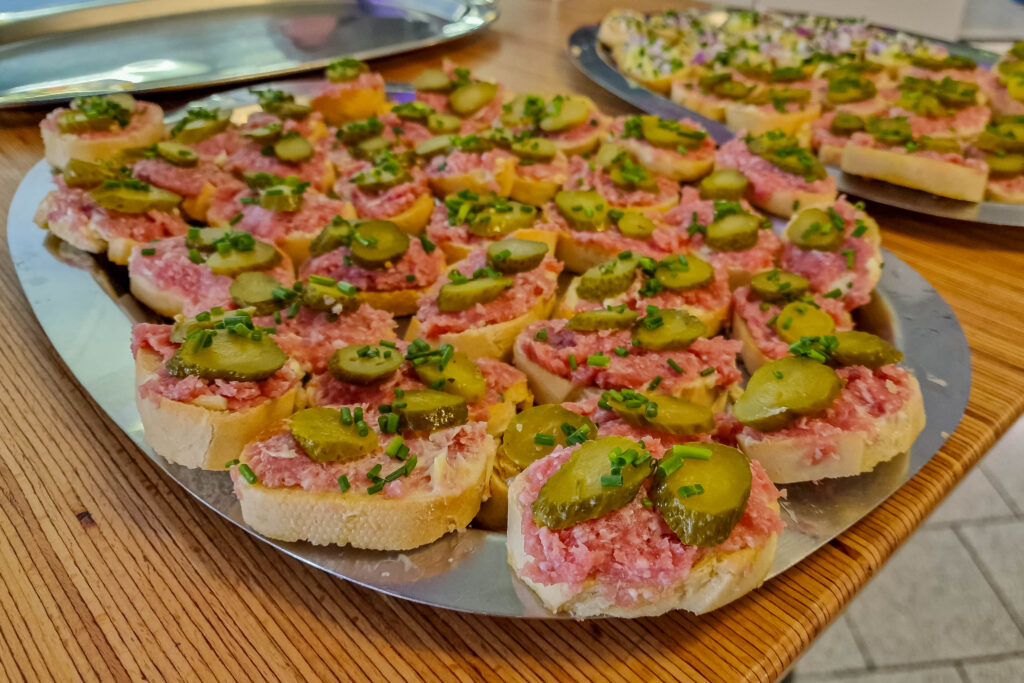
Sauerbraten
A classic Rhineland roast, Sauerbraten is beef (or sometimes even horse!) marinated for several days in vinegar, wine, and spices before slow-braising until tender. The resulting meat is rich and tangy, served with roasted almonds on top next to hearty potato dumplings or spätzle and red cabbage.
Why you’ll love it: Sour, sweet, silky texture—and it practically melts on your fork thanks to the long marinade and braise.
Where to try it: Many traditional restaurants serve sauerbraten on specific days—ask your host or look at menus marked “Rheinischer Sauerbraten.” Plates including sides usually run €15–20.
Schweinshaxe
For carnivores visiting Cologne, Schweinshaxe is the kind of meal you’ll remember. This slow-roasted pork knuckle features crispy skin and succulent meat, often served on a bed of sauerkraut or mashed potatoes. You’ll probably need a nap after eating it!
Why you’ll love it: Crackling skin meets fall-off-the-bone meat—in a way Cologne locals love to pair with their beer.
Where to try it: Found in beer halls like Peters Brauhaus or Brauerei zur Malzmühle. Expect steep portions, perfect for sharing. Prices hover around €18–22 with sides.
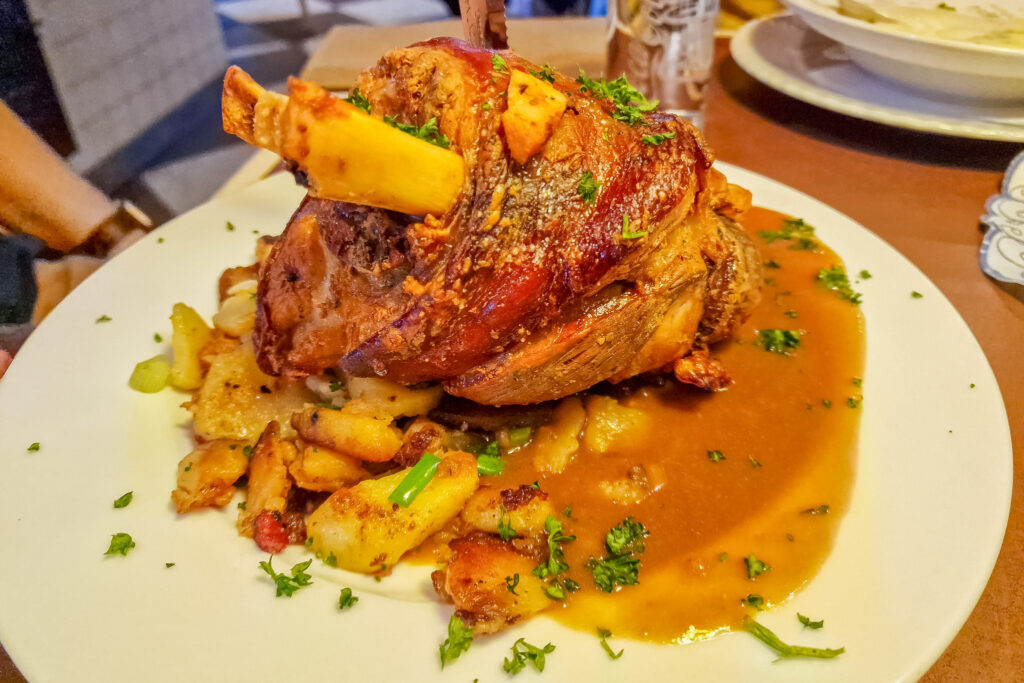
Bratwurst
You can’t talk about German food without mentioning Bratwurst. It simply means grilled sausage and it is one of those iconic German foods that you can find all around the country. In Cologne, it is often served simply – grilled, and paired with mustard in a bun or on a plate. It’s not spicy, but it’s deeply satisfying after a day of walking through the old town.
Why you’ll love it: Smoky grilled sausage, simple seasoning, best washed down with fresh Kölsch. There’s nothing not to like.
Where to try it: It’s a popular street food with vendors all around the Old Town. If you prefer to sit down, you’ll find it on almost every brauhaus menu. €5 for street food style, €10-€12 in a brauhaus (because it comes with sides)
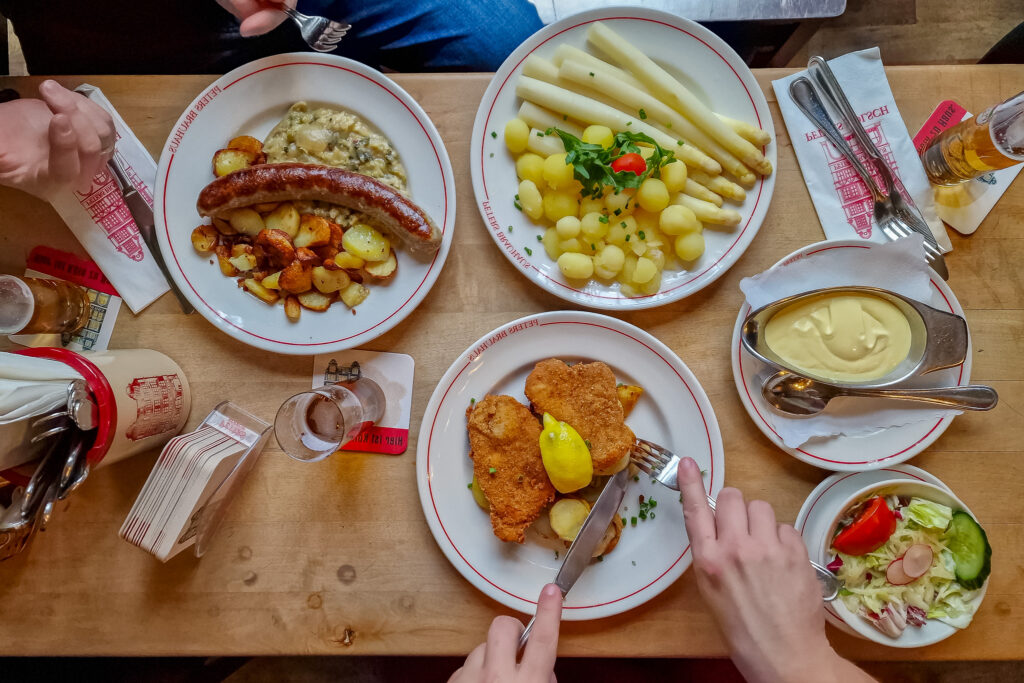
White Asparagus
Nicknamed “white gold”, white asparagus (Spargel) is a seasonal obsession in the Rhineland. Grown entirely underground to keep it pale and tender, this delicacy has a more delicate flavor than its green cousin, with a subtle sweetness and buttery texture that locals go absolutely wild for during Spargelzeit (asparagus season), which typically runs from mid-April to late June.
Why you’ll love it: Traditionally steamed or boiled, then generously doused in melted butter or creamy hollandaise, and served alongside cured ham, new potatoes, or schnitzel.
Where to try it: Only available mid-April to late June. Many restaurants offer an entire seasonal menu dedicated to asparagus. If you want to cook it yourself, visit to a local market or countryside restaurant during spring.
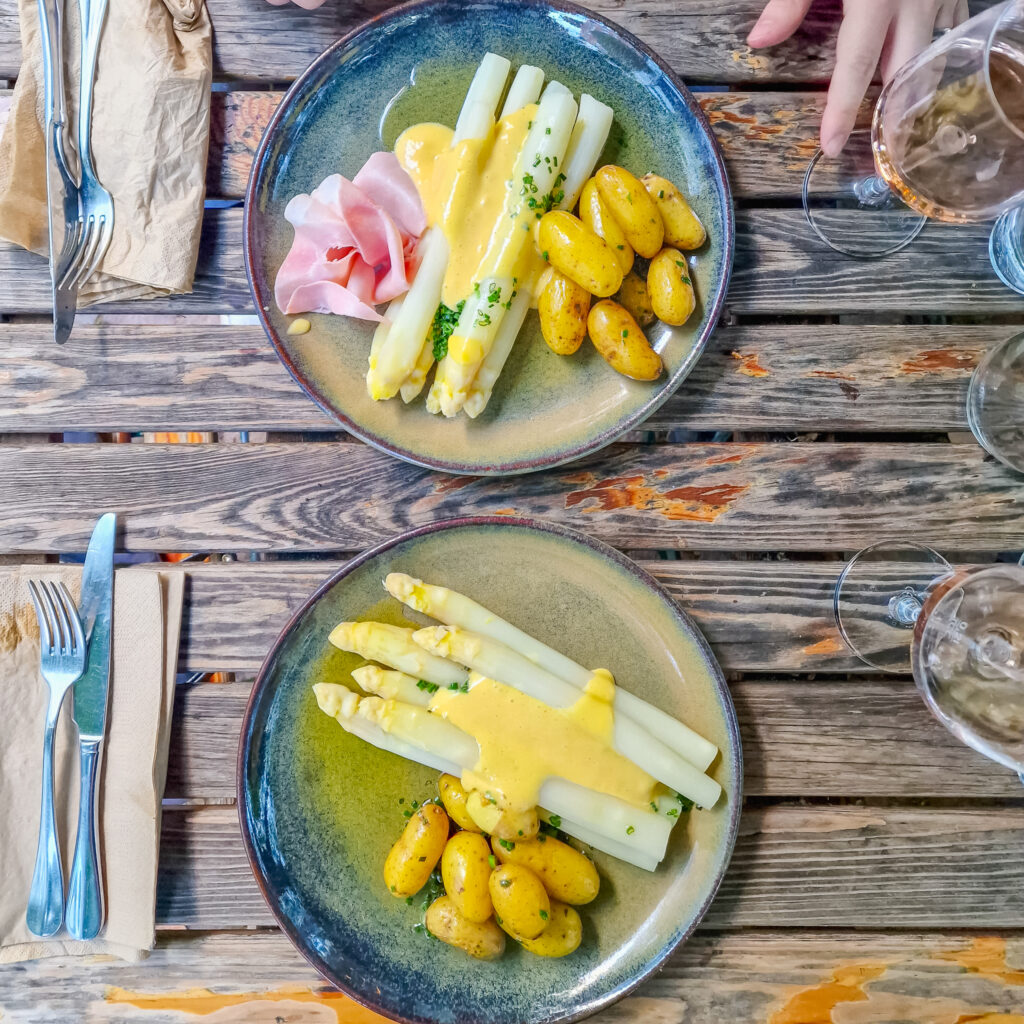
Berliner
A Berliner is a fluffy yeast doughnut filled with fruit jam and coated in sugar. Made fresh daily by hand, Berliners are light and pillowy, not overly sweet, and just the right size for a mid-morning or afternoon pick-me-up. Seen as a traditional Rhineland sweet treat, these donuts are especially popular during Karneval season. It’s a soft, slightly chewy pastry with a jammy center and a bright sugar coating that feels nostalgic and festive.
Why you’ll love it: Count on seasonal jam flavors like strawberry, raspberry, and occasionally apple — classic comfort in doughnut form
Where to try it: You can find these at almost any bakery around town! Our personal favorite is at Mauel Bakery. You can usually by 3 doughnuts for €1
Nougatbretzel
Everyone knows that Germany is famous for salted pretzels, but did you know that there are sweet pretzels too? In Cologne, we twist up two types of pretzel dough and then dunk it in a light creamy nougat and cover it in roasted almonds. It’s a satisfying blend of chewy, slightly salty pretzel and nutty sugary goodness—exactly the kind of treat that pairs well with afternoon coffee or a pocket‑snack on the go.
Why you’ll love it: The decadent contrast between savory and sweet.
Where to try it: Merzenich bakery has the best ones! It’s one of Merzenich’s signature items and regularly listed under their classics. You can find locations around town, including one very close to the cathedral. Usually €1–2 each.
